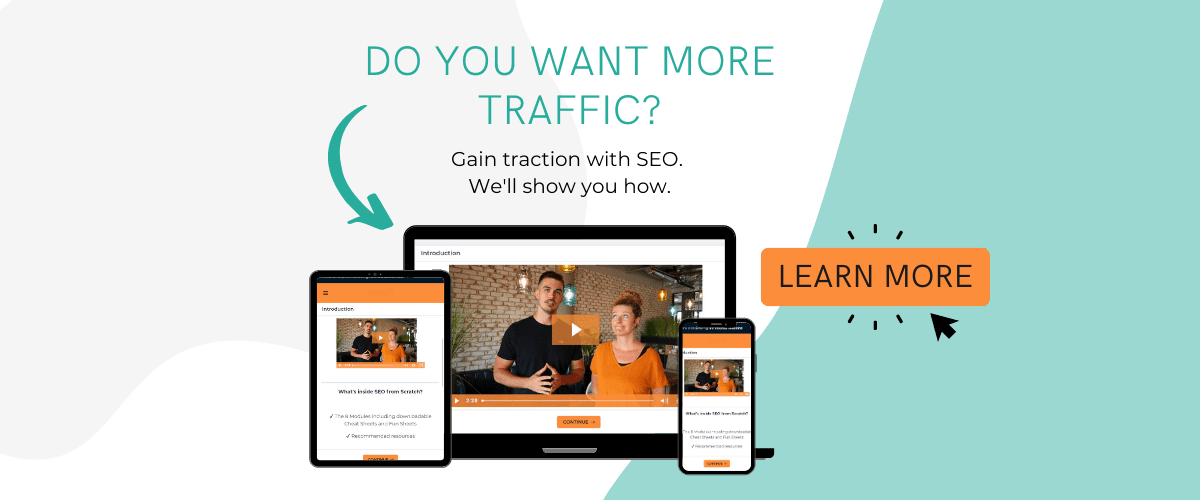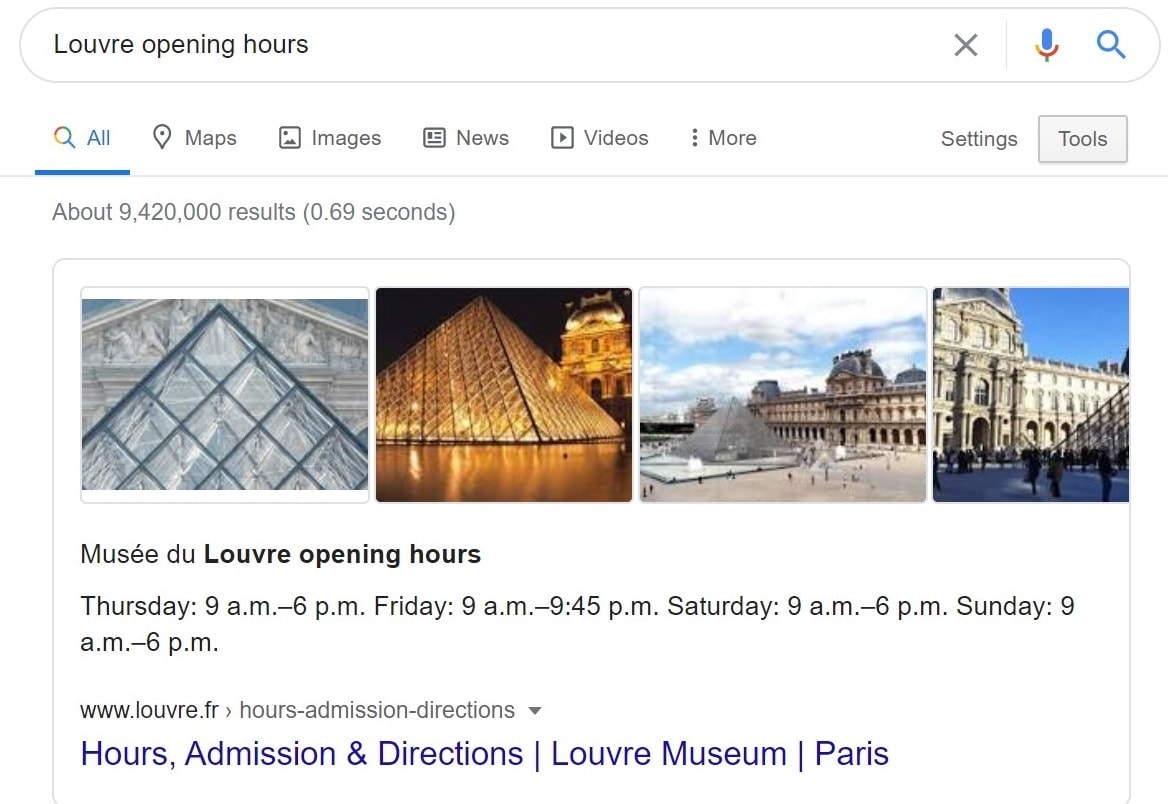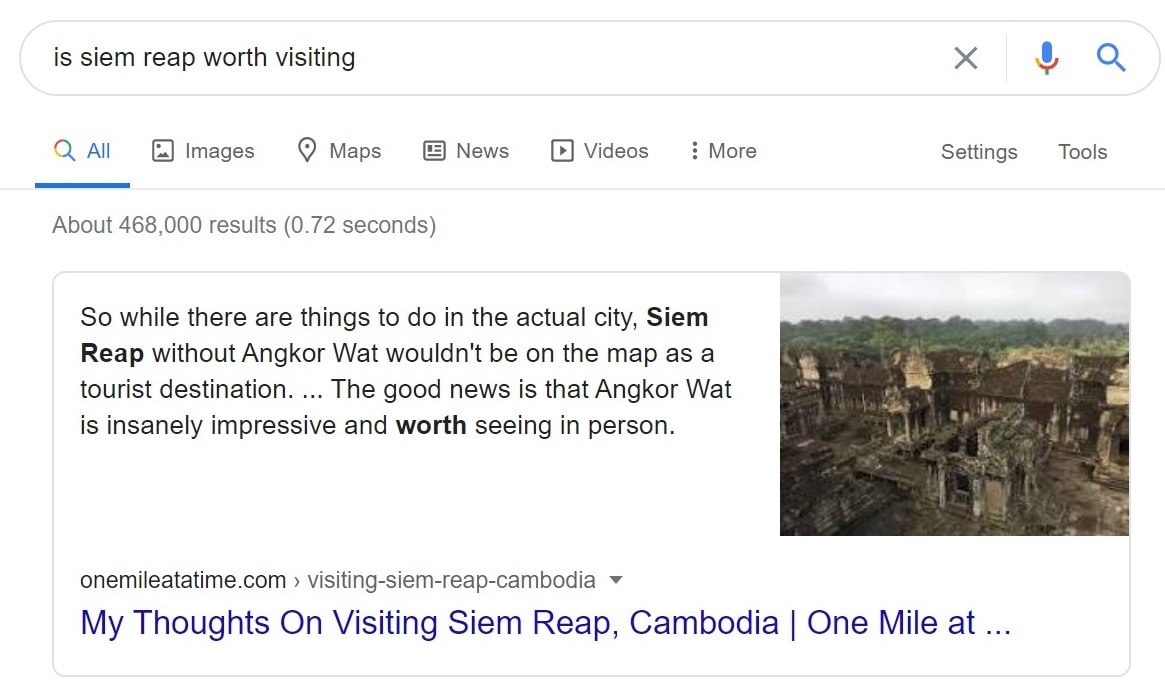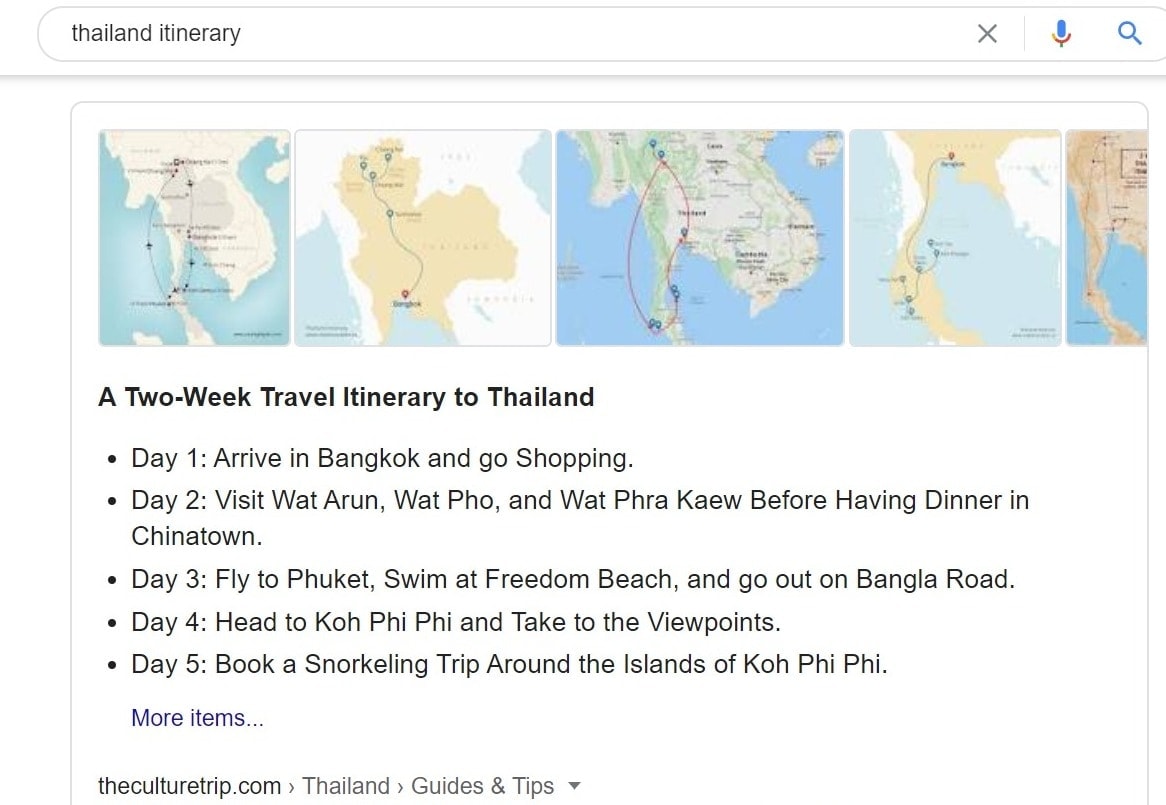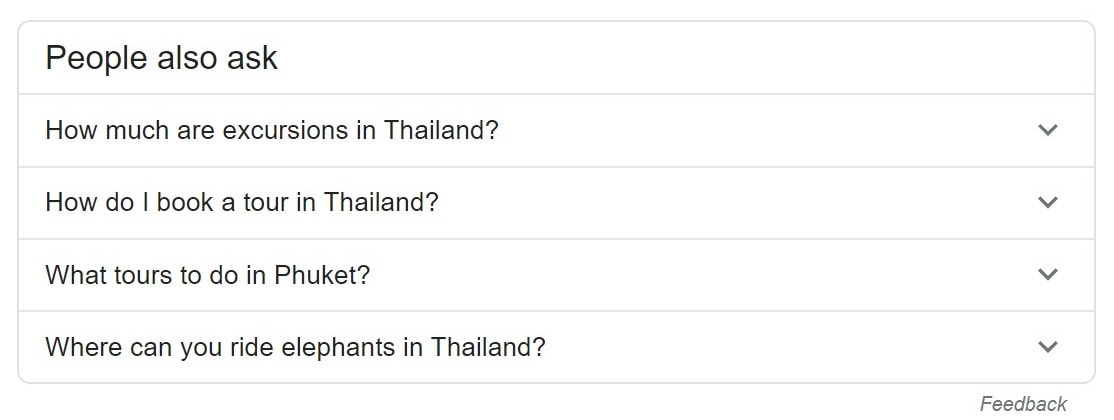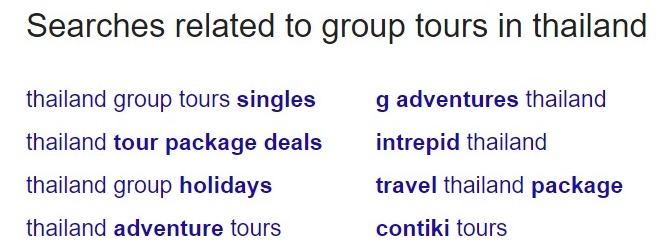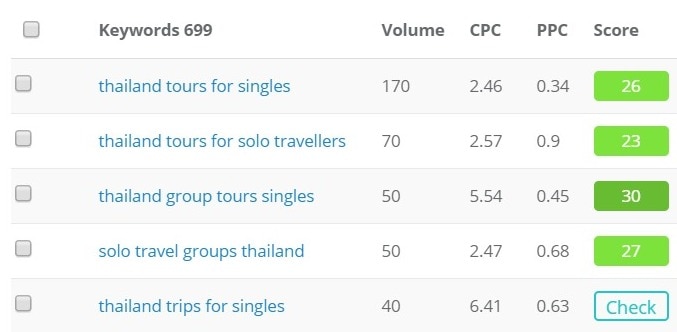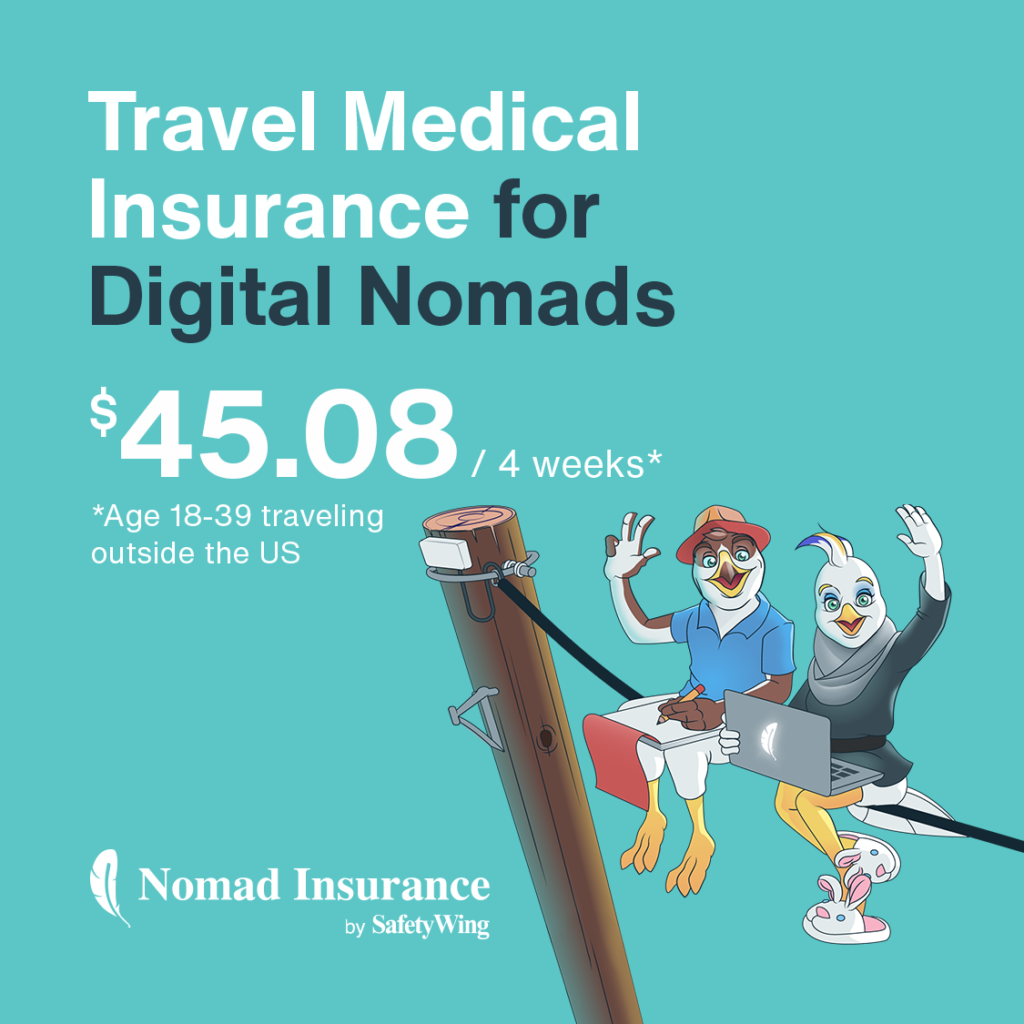If you already have a travel blog, you know how competitive this industry is. If you’re sitting there, looking at your travel website, and are still wondering how to make money – you’re at the right place.
In this post, I’m walking you through the steps to monetize your travel blog.
I am a travel blogger too. In fact, my main project is a travel blog that is fully monetized. I make between $3000 and $7000 per month. About 40% of my income is coming from ads and affiliates.
That said, I believe I can help you monetize your travel blog by using the same strategies.
We’re going to talk about SEO. There’s no need to avoid this topic if you wish to monetize your blog.
You still don’t know what SEO is?
Well, you may want to enroll in SEO from Scratch to learn how to implement SEO strategies. Otherwise, scroll down, and let’s dive into the steps that will help you make more money with your blog.
Note: These strategies can be applied to other niches, it doesn’t have to be about travel. All the examples listed here are related to the travel blogging industry.
Understanding the User Intent
This is such a crucial step; unfortunately, many travel bloggers seem to skip it!
The user intent tells us what a user is looking for when conducting a search query.
When we take the time to understand the user intent, it helps with content creation.
Any good blogs should have a fair mix of info content and money content.
Info content speaks for itself – it means having informational blog posts.
Money content refers to the blog posts that you can monetize (also known as “affiliate blog posts”.
Today, we are focussing on the keywords that make money, so we will focus on money content.
Although, kindly remember that any good blog should have a mix of info content and money content. (Should I repeat one more time?)
To make money with your blog, you must understand the user intent.
The best way to understand it is to think as a reader, not an expert.
Exercise
So, if you wish to book a hotel in Bangkok, what will you search for?
You could search for “hotel in Bangkok”, “best hotels in Bangkok”, “budget hotels in Bangkok”, etc.
Here we can see what you have different queries with different user intents.
When the query is longer, it becomes more specific.
Obviously, Google will show different results depending on the query.
What do you think the user needs when he looks for “hotel in Bangkok?”
If you decide to search for “hotel in Bangkok”, it might be because you are looking for a map so you can find the hotels nearby.
Keeping in mind that Google’s ultimate goal is to keep its users on Google, it will show you a map.
As a travel blogger, you must focus on keywords that require the user to click on a result.
It would be a better idea to choose a keyword such as “best hotel in Bangkok”, “best hotels in Bangkok for couples with kids”, etc.
Aiming for a long-tail keyword is a great idea since the user is looking for something specific and the competition is usually lower.
Also, Google cannot answer this query – the user must click on your website and read more about it. BINGO!
The user intent can be super easy to identify, but sometimes it can be a bit more challenging if it’s a broad query.
If we search for “best travel insurance” – we are looking to buy travel insurance and we wish to compare the options.
If we search for “Thailand itinerary” – it can mean different things. We may be looking for an itinerary for one week, two weeks, a month, or perhaps, you’re just looking for ideas to plan your next holidays.
If we search for “Is Siem Reap worth visiting” – we are probably trying to decide if we should visit Siem Reap or not and if so, why it’s a good destination to visit.
If we search for “Louvre opening hours” – we are after a quick answer, we want to know when the Louvre is open.
If we search for Things to do in Budapest” – we are looking for ideas. We are likely already in Budapest or about to go and we are trying to plan our trip.
These examples are all very different – We can see that some of them need short answers, some of them require detailed information.
Google will also show different results depending on the queries.
As we can see in the image below, Google could show a map, with opening hours, address, etc.
This is a good example of the Louvre opening hours.
Here, we can see a snippet regarding Siem Reap. The user should get a quick answer in the snippet and if he needs more info, he can simply click on the link to read more.
Then, here we can see that Google features images with short descriptions of things to do in Budapest and here we can see a different type of snippet including images and a list for a Thailand itinerary.
As a travel blogger, the goal here is to write content that cannot be answered only by Google.
Instead of writing a blog post about the Louvre opening hours, we may want to write a review of the Louvre.
Instead of writing a blog post about the things to do in Budapest, we may want to write an article about Budapest in 3 days.
Again – we focus on specific user intent – for SEO, it means we are targetting longtail keywords.
Understanding the Buying Stages
In the previous examples, we talked about the user intent and we saw queries from different buying stages.
I divided the buying stages into 3 different stages: the search for information, investigation, and conversion. If you need a trick to remember it, you can call it the SIC buying stages.
Search for Information
In the travel blogging industry, the search for information refers to the planning stage. The user is looking for information, but since travel planning can take months, it doesn’t mean the user is ready to buy yet.
Think about queries such as “backpacking route in Southeast Asia”, “how to get around Thailand”, “cheap countries to visit in Europe” and “when is the best time to visit Italy”.
As travel bloggers, this stage refers to our info content.
Investigation
During the investigation stage, the user is considering buying, so he is looking at the different options.
The user could compare, read reviews, look for alternatives. He may also be looking for pros and cons.
Think about queries such as “alternatives for Gopro”, “Thailand vs Bali”, “Best day trips from Lisbon”, “Getyourguide review”, “waterproof camera comparison”.
As travel bloggers, this stage refers to our money content.
Conversion
The conversion stage is when the user is finally buying. Usually, the user made his decision and is about to buy.
As travel bloggers, this stage is tricky because if the user leaves your website after reading your waterproof camera comparison, he will make his decision on his own and might buy directly on GoPro’s website.
The only way to convert the user is to add a call to action in your money content.
A call to action can be a text link or a button. We are used to seeing buttons like buy now, shop now, see prices, etc.
What makes a reader buy from your website?
If a user visits your website for the first time, he needs to trust your opinion.
This is why it’s pretty common to see a mix of info and money content.
You must provide value in order to convert. So you should make sure your reviews or comparison include a lot of details to build trust.
As travel bloggers, we are usually adding affiliate links in info content too – for example, if you write an itinerary for Budapest, you could also add recommendations for hotels and day trip ideas.
These articles may not convert as well as your money content, but still, you could earn money with affiliates if you provide value or a reason to click on your affiliate links.
For example, are you just listing the best hotels in Bangkok?
Or are you explaining why the hotels listed are the best hotel in Bangkok?
Keyword Research
Let’s talk about the different types of keywords.
Now that we know about the user intent and the buying stages, we can keep this in mind when we create our content strategy.
In the section, we are going to brainstorm keyword ideas and make sure we understand the differences between the stages and the intent.
So, let’s pretend that we are planning a trip to Thailand next year.
What could we search for?
Here are some ideas:
- “When is the best time to visit Thailand”
- “Do I need a visa to visit Thailand?”
- “Thailand itinerary”
- “Best places to visit in Thailand”
These queries mean the user wishes to visit Thailand and he is looking for information to plan a trip.
While you’re doing your research, you decide that you wish to go on a group trip instead of traveling solo.
What would you look for?
If you wish to compare group trips to Thailand, you may be looking for something like “best group tours in Thailand”, “Gadventure vs busabout Asia”, etc.
At this stage, the user is comparing the options.
Then, there will be two options, you may decide to click on a button and book a trip with Busabout Asia or you may want to think about it.
If you pick the latest, you may think about it for a while, come back three hours later, and you may google: “busabout Asia”. Are you ready to buy?
Yes. If you google “Busabout Asia”, you want to click on Busabout Asia’s website.
That said, you won’t click on a travel blog, you will click on Busabout Asia and book their tour there.
Keeping that in mind, you should only focus on content in the first two buying stages and add a call to action to your blog posts.
Easy, no?
Now that you have a better idea of the keywords you should be using, you can search for the keywords that make money.
I usually use both Google and Keysearch to find the relevant keywords.
So, let’s pretend that we are trying to find keywords to target related to “Group tours in Thailand”.
Why are we targeting this topic?
We want to earn commissions on group tours in Thailand.
We’re going to pretend we have a domain authority of 20 and the goal is to monetize the content, of course.
So, you should be looking for keywords that refer to the investigation stage.
Sometimes, it’s easy to find keyword ideas, but sometimes I need inspiration, so I usually start with Google recommendations.
Go to Google and start with your keyword idea.
Google will finish the sentence and make suggestions.
Usually, on the first page, you will also see related questions at the top and related searches at the bottom.
It’s a great way to be creative with longtail keywords especially when you feel stuck with a keyword.
In the next step, I log in to Keysearch and I check the low competition keywords.
For this example, I found “Thailand tours for Singles” and “Thailand tours for solo travelers” had low competition.
The user who googles this is looking for information. We could transform it by adding best – “Best Thailand tours for singles”, or “best Thailand tours for solo travelers”. When the user clicks on this result, he expects to see a comparison with several options.
But I didn’t stop there…
I found other keywords such as “Contiki Thailand review”, “Thailand island hopping packages” and “backpacking tours Thailand”.
Obviously, Thailand is a competitive destination, so it was a bit harder to find keyword ideas, but still, this type of content could potentially convert.
In this situation, I would probably end up picking a few keywords.
I’d start with the “best backpacking tours in Thailand” because it suits my niche.
Then, I’d create an article about the “best island hoppings packages in Thailand”.
And then, I’d probably write a review of the different companies I mentioned within these blog posts.
Why would I write about similar keywords and topics like this?
The goal is to be an expert and be in authority mode.
Authority Mode
In the SEO world, authority mode refers to the credibility you have about a topic.
Let’s go back to our example of group tours in Thailand.
My travel blog has a lot of authority about Thailand. I can rank easily within hours. It makes total sense for me to write more content about Thailand and make sure I don’t have a content gap. So while it’s a competitive destination for most, for me it works perfectly fine.
Here’s another way to see it:
Let’s pretend that you have one article about Italy and 30 articles about Spain.
Google will think that you are a Spain expert and will not think that you’re an authority about Italy.
When you’re in authority mode, it becomes easier to rank because Google trusts that you know what you’re talking about.
Basically, if your goal is to rank for all your Spain content, you need to become the biggest nerd about Spain.
Let’s take another example, if you have a blog about hiking in Europe, you should have articles covering all the topics related to hiking. It could be about hiking gear, hiking tours in Europe, hiking itineraries, etc.
Owning your niche is going to help because Google and your readers will trust your opinions more. More trust equals more traffic and more sales.
Now, let’s see a real-life example.
I started my blog Abrokenbackpack.com in 2015. At the time, I had a bit of content about Australia, but most of my articles where personal stories about the travel lifestyle.
My blog had a lot of traffic coming from social media, but no organic traffic from Google. I was basically in the sandbox, and my content was not ranking at all.
In 2017, I finally started to understand SEO and I decided to write a lot of content about Bali and Indonesia.
Quickly, my traffic increased and I became an authority for Bali content. To this day, my Bali content is very popular and rank well.
In 2018, I wrote more content about different destinations in Southeast Asia.
In 2019, I moved to Thailand and again, I wrote a lot of content about it.
To give you an idea, in May 2020, I have a total of 41 articles about Thailand, 35 articles about Indonesia, and a total of 127 articles about Asia.
I may not be an authority for European content, but I’m an authority for Asia content.
Nowadays, when I write a new article about Thailand, I can rank on the first page in a few hours.
Final Thoughts
So now, the first step for you may be to think about the topics you already have authority on and see how you can create more content around it including different buying stages.
There you have it – a solid strategy to monetize your travel blog.


